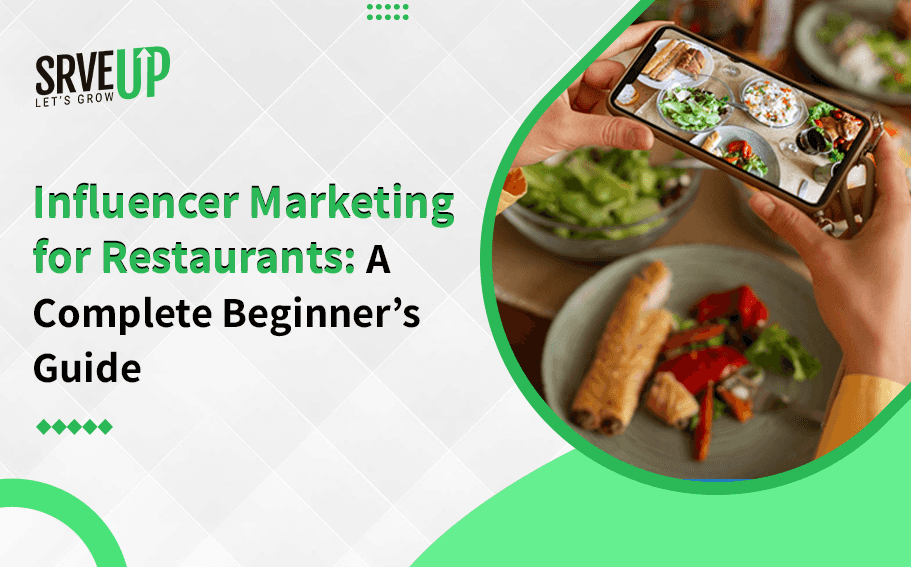The restaurant world is crowded. Too many signs. Too many doors. The streets are noisy with names that come and go.
But with the right branding, you have a chance to stay forever.
It does not matter if you begin with a single table or already stretch across the map. What matters is the feeling people carry when they see your name. In cities where the hours move fast and people no longer speak with their neighbours, word of mouth fades like morning fog. No one has time to ask. They look at screens, they scroll, pause, and maybe, if something feels right. Be it a cozy picture, a social media post or something that speaks to them, softly but clearly.
And that moment, that instant of decision, is where branding lives. They choose a place not by its taste. Not yet. But by how it makes them feel before the first bite. A name that feels familiar. That is the power of branding. It isn’t loud. It doesn’t beg. It just makes them feel good about choosing you. Yes, that’s the impact you can create just with a powerful branding. If you’re new to this space, our blog offers bold, intentional ideas to help you create effective restaurant branding. Read on.
Top Restaurant Branding Ideas to Follow
- Make Your Brand the Impression People Remember
- Begin With a Clear Concept That Guides Everything Else
- Write Down What You Stand For and believe in it
- Know Your Space in the Market and Your Difference
- Build a Voice That Stays The Same Everywhere
- Create a Visual Identity That Feels Like One World
- Stay Flexible, But Stay True to Your Core
- Every Great Brand Starts With Purpose
- Position Your Brand Where it Belongs in People’s Minds
- Talk to People to Understand Your Brand Through Their Eyes
1. Make Your Brand the Impression People Remember

First of all, don’t mistake it for a branding strategy. While a branding strategy is important, it is mainly about the visuals, the tone, and the messaging, among other elements.
But your brand is more than just that. It is the entire perception people carry about your business. It’s how they describe their experience with you, how they remember you.
It’s that impression that sticks, the one that makes someone think of your restaurant when they are craving something at midnight.
It lives in the pause between “Where should we eat?” and “Let’s go there again.”
So yes, strategy matters. But the real magic happens when all those elements come together to shape how people feel about your restaurant, even when they are nowhere near it.
Also Read: How to Create a Restaurant Marketing Plan from Scratch?
2. Begin With a Clear Concept That Guides Everything Else

You need to begin with a clear concept. Before anything else, you need to understand your restaurant, its vibe, customers and goals. The clearer your concept, the stronger your brand’s foundation.
If you don’t know your own concept, it’s hard to make decisions that fit. Everything builds from here: your messaging, your decor, your style, and even your service flow. When you get this part right, everything else gets easier. Your brand starts to take shape naturally.
3. Write Down What You Stand For and Believe in it

The next thing is you need to craft a mission or vision that isn’t just filler. It should speak to what you believe in, the kind of experience you want to offer, and the reason your restaurant exists beyond just serving meals. This is what sets you apart from a place that simply serves food. A mission helps you attract the right people, staff, and customers. And once you write it down, let it actually guide what you do.
4. Know Your Space in the Market and Your Difference

Take time to understand who you serve. Where do you serve? Who else is out there? What are other restaurants doing, and how is yours different? Positioning helps your brand stand apart instead of getting lost in the crowd and win loyal customers. When you know what makes you different, you can highlight it everywhere — in how you price, in how you promote, in how you show up.
This clarity becomes a magnet for the right audience.
5. Build a Voice That Stays The Same Everywhere

Every message you share, whether it’s on a menu, a website, or a napkin note, should carry the same voice. Choosing what vibe you offer — is it warm, funny or cool?
Then decide on that and stay consistent. So, whenever they see your message, they know it’s you. It helps you build a strong connection with your audience.
You don’t need fancy words. You need words that sound like you every time.
6. Create a Visual Identity That Feels Like One World

Your logo, your colour palette, your interior decor, even your packaging, all of it should feel like part of the same world. Design choices aren’t just aesthetic; they’re emotional cues that help people remember you. When a customer walks in or scrolls your feed, they should feel something that matches your voice and story. The goal is not just to look good. It’s to be remembered. And that starts with everything looking like it belongs together.
7. Stay Flexible, But Stay True to Your Core

Brands don’t have to be static or rigid. You also need to keep experimenting with your branding, so bring something fresh to the table every time. So don’t forget to grow, shift, and refine with time. But at the same time, keep track of your evolving identity with a brand guide. This helps you stay recognizable even while evolving. Freshness is great, but it should always come from the same soul your brand began with.
8. Every Great Brand Starts With Purpose

You don’t start out randomly. So, you are not supposed to forget it once you start generating profit and get lost in the way. That’s why your brand must have a mission statement. It doesn’t need to be long. One sentence, maybe two. But it should feel like your restaurant’s spine, something that holds everything else in place, from your menu to your staff to the mood of your space. This is the first thing that gives your brand its shape and reason.
9. Position Your Brand Where it Belongs in People’s Minds

Now, your next step is understanding where you are trying to reach. This is not about physical expansion but your market position. It’s the space your restaurant occupies in a customer’s heart, like how they perceive you compared to endless options around them, and why they choose you over someone else.
You also need to figure out:
How much do you charge? What kind of food experience are you offering?
Where are you located, and how do you show up in the world?
10. Talk to People to Understand Your Brand Through Their Eyes

Apart from having the basic understanding of all the above key points to map out your position, here are some additional things you will need to do:
Talk to people. Ask around the neighbourhood. What do they see you as? Who do they think your competition is? What stands out to them and what feels forgettable?
Because the best insights come from the people.
Positioning isn’t just about being different. It’s about being clear so the right people find you and feel like they belong.
Wrapping Up
So, these are some useful branding ideas that you can start using in your restaurant journey. If you follow these steps with consistency, you will begin to understand your business on a deeper level. You will not only learn how to brand it better but also how to market it with purpose and clarity.
Every step you take will teach you something new. You will discover fresh ways to connect with your audience and keep your brand active, relevant, and exciting. When you stay committed in this way, you will never lose touch with your marketing goals or your customers.
If you would like to receive more ideas like these, make sure to subscribe to our newsletter. We are always coming up with valuable insights and creative ideas to help you promote your restaurant. Stay curious. We will be back with more.






